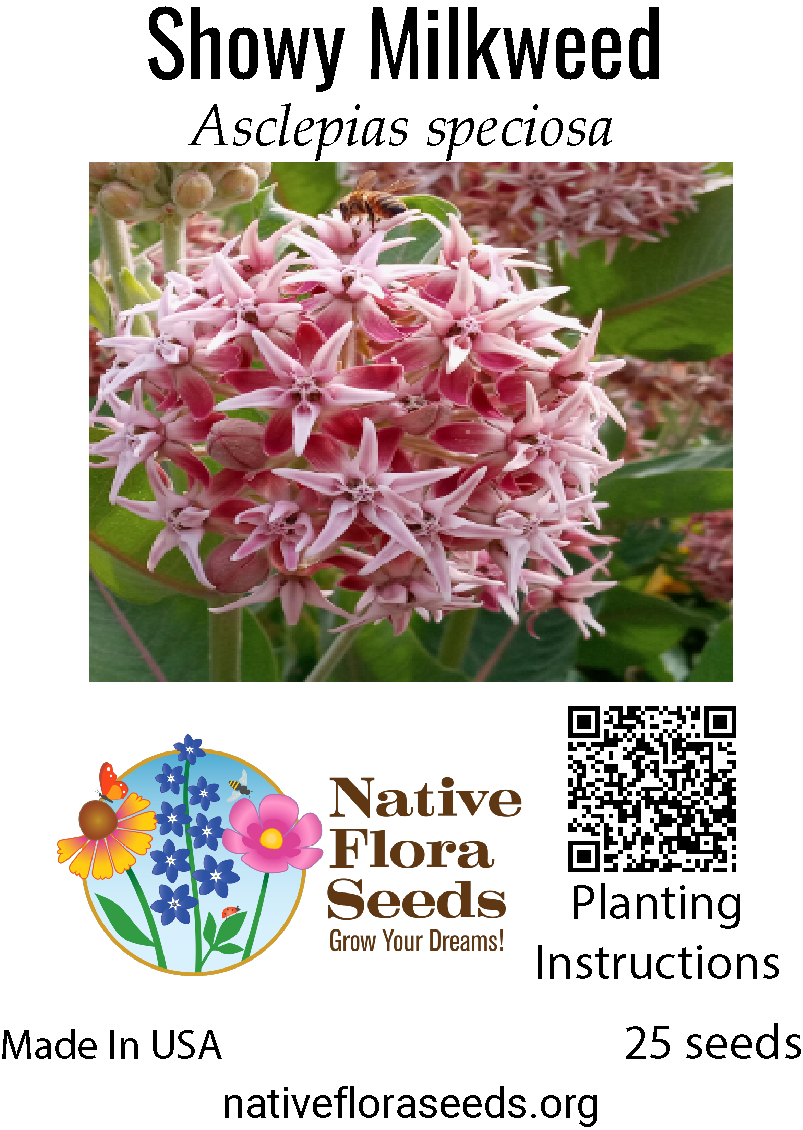Asclepias speciosa (Showy Milkweed) is a beautiful and important plant, especially for monarch butterflies. Here's how to grow it from seed:
Site Selection
Sunlight: Showy Milkweed needs full sun, at least 6 hours of direct sunlight daily.
Soil: Well-drained soil is crucial. It can tolerate a range of soil types, including sandy, loamy, and even clay, as long as the drainage is good. Avoid waterlogged areas.
Space: These plants can grow 2-3 feet tall and spread via rhizomes, forming colonies over time. Give them ample space to spread, especially if you're aiming for a naturalized look.
Direct Sowing Outdoors
Fall Planting: Fall is the ideal time to sow seeds directly outdoors. This allows for natural stratification over winter.
Preparation: Clear the area of weeds and debris. Lightly loosen the top layer of soil.
Planting Depth: Sow seeds about 1/4 inch deep.
Watering: Keep the soil consistently moist, but not soggy, until seedlings emerge.
Spring Planting: Spring sowing is also possible, but germination rates might be lower without stratification.
Preparation: Prepare the seedbed as described above.
Planting Depth: Sow seeds about 1/4 inch deep.
Watering: Water regularly until seedlings are established.
Starting Seeds Indoors
Timing: Start seeds indoors 8-10 weeks before the last expected frost in your area.
Stratification: Showy Milkweed seeds benefit greatly from cold stratification. This improves germination rates.
Mix seeds with slightly moistened sand or vermiculite.
Place the mixture in a sealed plastic bag.
Refrigerate for 4-6 weeks.
Planting:
Use a seed starting mix. Sow seeds about 1/4 inch deep in seed starting trays or pots.
Keep the soil moist and provide warmth (70-75°F) for germination.
Transplanting: Once seedlings have a few sets of true leaves and the weather has warmed (after the last frost), transplant them outdoors. Harden them off gradually before transplanting.
Maintenance Tips
Watering: Once established, Showy Milkweed is quite drought-tolerant. Water deeply but infrequently, allowing the soil to dry out somewhat between waterings.
Fertilizing: They generally don't need much fertilizer. A light application of a balanced fertilizer in spring is sufficient.
Pinching: Pinching back the tips of stems in late spring can encourage bushier growth.
Staking: Usually not necessary, as they have strong stems.
Deadheading: If you want to prevent self-seeding (it can spread), remove seed pods before they mature.
Dividing: Established clumps can be divided every few years to control spread and rejuvenate plants.
Invasiveness
Showy Milkweed is native to North America and is not considered invasive in the same way as some non-native plants. However, it can spread through its rhizomes and self-seeding, forming colonies over time. If you want to restrict its spread, remove seed pods before they mature and divide clumps regularly.
Additional Notes
Scarification: Scarification is not usually necessary for Asclepias speciosa seeds.
Pollinators: This is a crucial host plant for monarch butterflies. It also attracts other butterflies, bees, and hummingbirds.
Deer Resistance: Milkweed is relatively deer-resistant, though they may browse on it occasionally.
Important Considerations
Milkweed has a deep taproot, so choose a planting location where it can grow undisturbed.
Be patient! Milkweed can be slow to establish in the first year.
By following these guidelines, you'll be able to grow beautiful and beneficial Showy Milkweed in your garden!



